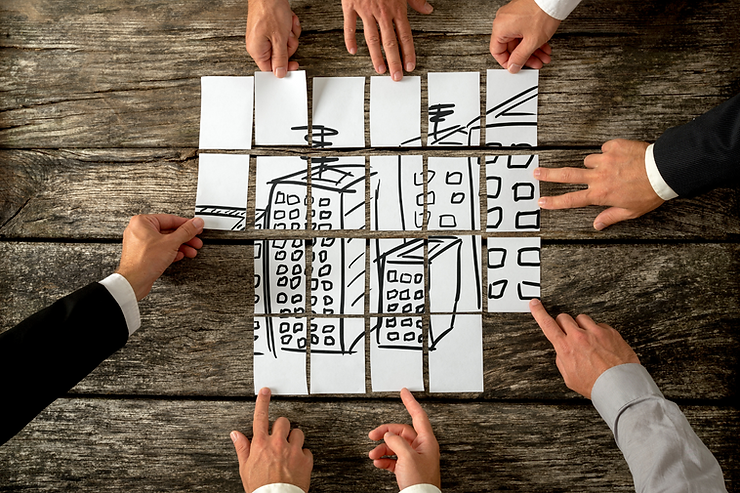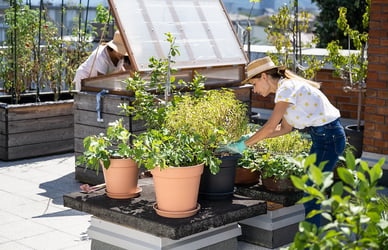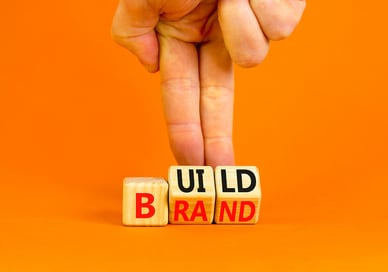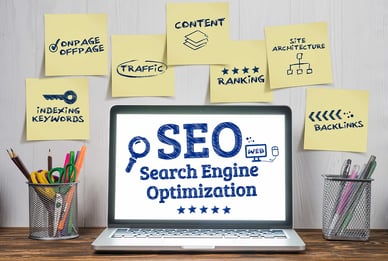The Future of Mixed-Use Development

Urban landscapes are evolving into self-sufficient communities, like villages. The future of mixed use development reflects the growing desire for the live-work-play fusion that more closely connects consumers and businesses.
Mixed use development creates a balance between residential and commercial spaces. Where residents can walk to their workplace, favorite cafe, or fitness club. Tend to a rooftop garden. Bring their children to a park right in the midst of this urban oasis. It’s a town within a city. A microcosm where residents build connections, not only with each other but the businesspeople who are part of this community.
Businesses and institutions—like education and finance—appreciate the built-in foot traffic that comes with a mixed use development. Residents frequent the shops, restaurants, services, and other amenities so close to their homes. Workers don’t have to stray too far to access the services they need before, during, or after their workday. The combination attracts more residents and workers.
In addition to the people who live, work, and play here, the mixed-use development’s convenient variety of businesses makes it a destination of choice for people outside the urban village. When you live in the city and can obtain everything you want and need within a walkable distance, it’s worth the trip.
What are the Trends for Mixed-Use Development?
From the developer’s perspective, these lifestyle needs represent opportunity. There are challenges to overcome, but the future of mixed-use development looks bright for developers who have the capacity to identify the right opportunities and then market them properly.
Over the past few years, lifestyles have evolved—out of necessity. The pandemic changed the way people live, work, and play. The workforce shifted to remote wherever possible. Consumers sparked a frenzy in fast home deliveries for everything from groceries and meals to household products. And we had to measure every decision for going out as to how necessary it was—like going to the gym when you can work out at home or heading to the movies when you can stream it on your television.
Even when the restrictions were lifted, many people learned they liked some of their changes. The convenience of home deliveries and remote working was eye-opening. So, what do we want now, and how does a mixed-use development serve that desire?
Walkability.
Convenience is key when it comes to the almighty location, location, location choice. City dwellers want their important needs within walking or biking distance. Think of the village where you can get what you want and where you want without dealing with traffic and parking. And you have it all within one or two city blocks. A quick trip to the market, pharmacy, or coffee shop is exactly that—a quick trip.
 In 2023, the National Association of Realtors polled 2,000 adults living in the 50 largest metro areas in the country. The Community & Transportation Preferences Survey showed that walkability is a major factor in choosing where they will live. 79% of the respondents wanted to live “within an easy walk of other places and things, such as shops and parks…. 78% of those indicated that they would be willing to pay more to live in a walkable community.”
In 2023, the National Association of Realtors polled 2,000 adults living in the 50 largest metro areas in the country. The Community & Transportation Preferences Survey showed that walkability is a major factor in choosing where they will live. 79% of the respondents wanted to live “within an easy walk of other places and things, such as shops and parks…. 78% of those indicated that they would be willing to pay more to live in a walkable community.”The future of mixed used development’s success lies in populating the urban village with the right blend of residences and businesses that will support one another in the long run with a short walk.
Community Engagement.
Next on the list of needs of a thriving live-work-play environment is community engagement. People don’t choose city life because they want to be isolated. They want to connect and experience diverse offerings for all their interests. Mixed-use developers must embrace this core need for connectivity. These communities should encourage social interaction, not just between residents but with the people who also work and play in this space.
 And it’s not enough to just populate the mixed-use development with opportunities. Encourage businesses to host events that bring people together. Invite businesses to partner and connect their workers. Recognize that the beauty of being part of an urban village is the ability to explore the potential for a fulfilling lifestyle!
And it’s not enough to just populate the mixed-use development with opportunities. Encourage businesses to host events that bring people together. Invite businesses to partner and connect their workers. Recognize that the beauty of being part of an urban village is the ability to explore the potential for a fulfilling lifestyle!Eco-Friendliness.
Sustainability is an important consideration for businesses and individuals. They want to know that developers have a long-term strategy for environmental responsibility.
A high walkability rating contributes to sustainability by reducing the need for transportation which lessens the carbon footprint.
 But a sustainable lifestyle requires more than a pedestrian community. Developers should integrate green spaces. Parks and community gardens promote biodiversity that can be hard to find in an urban setting.
But a sustainable lifestyle requires more than a pedestrian community. Developers should integrate green spaces. Parks and community gardens promote biodiversity that can be hard to find in an urban setting. They should offer easily accessible recycling programs and explore the potential for using renewable energy resources (solar, wind) and energy-efficient building practices, materials, appliances, and fixtures.
Smart Cities.
We’ve become accustomed to smart technology in our daily lives ever since Apple introduced the iPhone in 2007. We rely on voice-activated smart assistants like Siri and Alexa. We enjoy the convenience of smart home automation, like thermostats, security cameras, doorbells, lighting, and appliances.

But if you’ve ever searched for a WiFi signal, been frustrated with slow or unreliable connections, or simply wanted the convenience of navigating an area using your technology, you already appreciate the value of smart cities.
A smart city uses technology, like Internet of Things (IoT) sensors to gather information and provide better communication for and with people living and working there. Incorporating smart technology into your mixed-use development shows prospective residents and tenants that you are forward-thinking and committed to supporting their needs.
How can Marketing Support Mixed-use Development?
The future of mixed-use development should combine all these features. Then, developers must market their projects using the tools and messaging that will communicate the unique value of their urban village to residents and business owners.
Denscty Collective specializes in marketing for mixed-use development. We’ve seen developers overlook or underutilize certain marketing components.
Branding
As a mixed use developer, you should look at utilizing two branding strategies: place branding and sub-branding.

Place branding attaches an identity to your community. It’s more than a name and a logo. Your place brand communicates the value of the urban village’s lifestyle. It’s a combination of the physical attributes (e.g., location, parks, architecture, amenities) and the experience, which encompasses walkability, opportunities for social engagement, and quality of life.
Targeted Marketing
What is your vision for the mixed-use development? It’s certainly not a one-size-fits-all proposition.
 Who represents your target market for the various components of your mixed-use development? You probably segment commercial from residential. What about cultural and institutional? Who is the right fit for your value proposition? Have you defined the balance of spaces to be dedicated to each?
Who represents your target market for the various components of your mixed-use development? You probably segment commercial from residential. What about cultural and institutional? Who is the right fit for your value proposition? Have you defined the balance of spaces to be dedicated to each? Social Media
Social media is perhaps the most misunderstood marketing medium. Business owners are told they need to use it, but they either don’t think it has real potential or simply don’t know how to get the best results. A social media marketing strategy requires more than posting on Facebook or Instagram a few times a week. That’s action, not strategy.

Start by establishing goals for your social media campaigns, like reaching a certain milestone of followers within your target markets. Then build the strategy to help you achieve those objectives.
Search Engine Optimization
It’s not enough to have a great website populated with fascinating information about your mixed-use development. If you haven’t optimized your site, you won’t get visitors.
Search engine optimization (SEO) is an ongoing marketing task designed to improve your placement in search engine result pages (SERPs). These are the listings that appear when you enter search terms in a browser, like Google.
 Search engines use bots—called “spiders” or “crawlers”— that review and index websites to find the best match for a keyword search. Then, they rank their findings, delivering their best matches. Spiders look for a variety of factors when determining the websites and web pages to present. And that’s where a good SEO professional is essential. They know the criteria, like fresh content, relevant use of keywords and phrases, and good use of links. By investing in SEO, you will reach more people who don’t know about you—but should!
Search engines use bots—called “spiders” or “crawlers”— that review and index websites to find the best match for a keyword search. Then, they rank their findings, delivering their best matches. Spiders look for a variety of factors when determining the websites and web pages to present. And that’s where a good SEO professional is essential. They know the criteria, like fresh content, relevant use of keywords and phrases, and good use of links. By investing in SEO, you will reach more people who don’t know about you—but should!Email Marketing
Forget what you’ve heard. Email marketing is not dead!
- The number of worldwide email users has increased from 1.5 billion in 2018 to 4.37 billion in 2023, with projections for 4.73 billion in 2026.
- 99% of email users check their emails daily.
- 67% of people prefer getting brand messages via email.

When you’ve used SEO and social media marketing, you’ve gained leads. Use email marketing to build on those relationships and your brand visibility. Don’t bombard them with sales pitches but have conversations centered on news and updates that might matter to them. Invite them to events. Let your email VIP list know about progress in the development, such as new tenants (and what they bring to the urban village). Share videos and virtual tours.
Events
Keeping the community’s members connected is essential to any mixed-use development. Events provide opportunities to bring people together in a friendly atmosphere of shared interest.
 Build a calendar of special events that will appeal to your various segments, such as eco friends, recreationalists, nightlifers, families, and cultural aficionados. Use social media to ask followers what kind of events they’d attend. Consult with your commercial tenants to get their input and involvement. Spread the event traffic to a variety of venues throughout your development.
Build a calendar of special events that will appeal to your various segments, such as eco friends, recreationalists, nightlifers, families, and cultural aficionados. Use social media to ask followers what kind of events they’d attend. Consult with your commercial tenants to get their input and involvement. Spread the event traffic to a variety of venues throughout your development.Then, use your website to provide event details and your social media and email marketing to promote the event.
Mixed-Use Development Marketing Tips: Simplify & Focus
The future of mixed-use development is exciting! This solution provides a pleasing alternative to the vision of crowded, unfriendly cities filled with urban sprawl. The urban village welcomes residents and businesses to interconnect and build valued relationships that were previously hard to find.
Denscty Collective is committed to the marketing challenges and solutions of mixed-use developers. Our marketing services provide professional expertise in every area, including brand identity, AI-powered marketing services, digital marketing, analytics, search engine optimization, and every step of the customer journey.
As a developer, your business has highly specialized marketing needs. Trust a marketing firm that is committed to you and your success. Contact us to discuss how your mixed-use.
